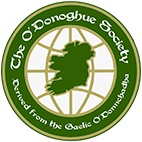George Terry Donoghue, 1884-62
Donoghue Elementary School 707 East 37th Street The school was named for George Terry Donoghue 1884-62, a civil engineer.
George Donoghue was born in Chicago in 1884, and went to school in the city’s public schools. He grew up during the time that Chicago was finally dealing with the problems created by its site. Chicago had been founded on low marshy land, convenient to ships on lakefront and river, but subject to floods. Chicago’s increasing population and industry on this swampy land was good for the economy but at the same time meant increasing the pollution of the river and the lake. Clean water was hard to come by, and therefore disease was all too easy to come by.
In 1885 when George Donoghue was just a year old, a great rain washed sewage and refuse out of Chicago and the Chicago River, and into Lake Michigan, polluting Chicago’s drinking water supply. The Illinois General Assembly established the Chicago Sanitary District in 1889 (George was five), which then began to build the Sanitary and Ship Canal 1892 (George was 8). The plan was to drain the low lying areas by deepening and dredging the river, and building a canal to link the Chicago River with waterways running to the Mississippi River. In effect, Chicago was proposing to reverse the natural flow of the river, let it flow away from the lake and take Chicago’s waste (later treated waste) with it. This project had been started earlier in 1871, but now was taken over with more modern engineering and equipment. It was a remarkable engineering achievement. Chicagoans called it the “eighth wonder of the world.”
George Donoghue grew up in a city busy with these large and visible projects. Probably prompted by this, he prepared himself to be a civil engineer. He entered the University of Illinois, earned a Bachelor of Science degree in Civil Engineering in 1906. He was immediately employed by the Sanitary District as an instrument man, working to control the changing flows of drainage water. He then was a junior engineer with the Sanitary District of Wilmette for two years 1908-10. When the North Shore Channel was opened in 1910, he became an assistant engineer of the North Shore Pumping Station 1910-12.
The next great project enlarging the sanitary and drainage system was the digging of the Calumet-Sag Channel begun in 1911 and not finished until 1922. This had involved the reversal of the flow of the Calumet River so it would no longer flow into Lake Michigan. For this large work George Donoghue became a division engineer from 1912. At the end of that project, from 1921-24 George Donoghue was president of the Donoghue Construction Building Corporation.
Another project important to Chicago was the creation and maintenance of its parks. The South Park Commission had opened 10 neighborhood parks in 1905, which stimulated similar parks in the Westside and in Lincoln Park, and also in other US cities. Many of Chicago’s parks were flood-plain areas such as those along the North Branch of the Chicago River, and therefore connected with the engineering of the Chicago-area drainage system. The parks often had good natural features, needed only minimal landscaping to make them parks. In the 1920s and 1930s George Donoghue turned his expertise to the parks. He was with the South Park Commissioners, being assistant to the president until 1926, when he became superintendent of the South Park District.
During his tenure as the South Park District superintendent, George Donoghue joined David Kellum, the founder of the Bud Billiken Club, and Edgar Trown, president of the National Negro Council, in deciding to hold the very first Bud Billiken Day parade and picnic in 1929. The South Park District included Washington Park, the end point of the parade and the site of the picnic ever since.
In 1934 George Donoghue was appointed the first general superintendent of the entire Chicago Park District. Under his leadership, the Park District began community programs for all ages, featuring arts, sports, drama, summer camps, and much more. Further, park fieldhouses were reopened with full-time, experienced staff.
We owe to George Donoghue and other engineers a large debt for our daily use of clean water and for the fine parks in Chicago neighborhoods.
Information from material supplied by Cynthia Greenleaf at the Chicago Public Schools, articles by Arlan Juhl ‘Flood Control and Drainage,’ by Louis Cain ‘Water,’ Julia Bachrach ‘Park Districts,’ in the Encyclopedia of Chicago eds James Grossman et al; Harold Mayer & Richard Wade Chicago, Growth of a Metropolis1969 /1973, pp 274-5, http://www.chicagoparkdistrict.com; and http://www.chicagodefender.com
This brief account is by Peggy Bevington, amplified by Linda Wing, October 2005.
